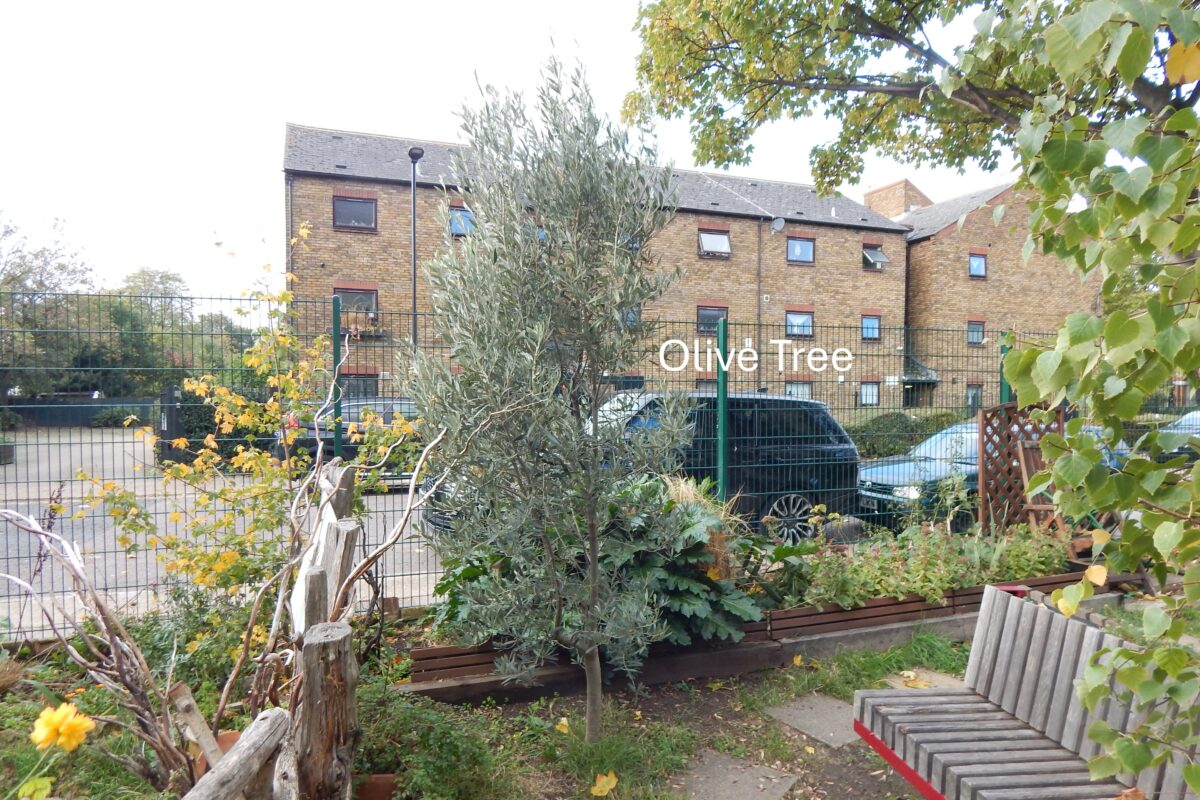This time of year, we become very aware of trees. The leaves of deciduous trees are going yellow and some like the cherry tree going red too. The big month for leaf fall is actually November which is less than a week away. By December, we’ll have bare, skeletal branches, in the garden and along Earlham Grove.
I went around the garden seeing what trees we have. There are two sycamores, the big one by the fence and the other by the compost bins. We have two cherries, the pink and white, at the front of the garden. There are three birch trees. The big one by the shelter, and two smaller ones by the wildflower bed, and the other by the small pergola. There’s an elder, near the side gate, most obvious when it is full of blossom in late spring. There’s a hawthorn near the mud kitchen, almost overshadowed by the cherries. We have privet along the front and along the fence on Sprowston. Many people don’t realise it is actually a tree, only seeing it as a hedge, favoured because it is evergreen. But quite a few trees can become hedges, like beech or hawthorn. You just cut them back. Privet you might regard as a half and half, half bush half tree.
There’s a hazel by the greenhouse. It does yield some nuts, a handful in September. It is also quite bushy and could be used as a hedge. There are two small bay trees on either side of the Dare to Dream entrance. They can grow up to 15 metres, but ours never will as they are in containers. There’s a young plum near the Fothergill bed. No fruit at all this year, though lots last year. Weather related, I am sure. We have an olive tree, a little way beyond the sycamore, by the wildflower bed. No olives this year either. There’s two walnut trees. One by the gate, the other in a large container by the buddleia. There were six unripe nuts in late spring, and then there were none. I suspect the squirrels. There’s a fig by in the large pergola. It’s in a container and doesn’t look very happy at all. Nearby is the magnolia. That is doing fine, flowering early spring, the blooms remind me of lightbulbs. There are several willows. A group by the Dare to Dream, some made into a living hedge. There’s another willow near the greenhouse. They are the first to come into bud and leaf. And finally a dwarf juniper, near the grapevine.
Climate change is affecting our native trees. They are adjusted to our seasons as they were. But hotter, dryer summers does them no good at all, and some may not be able to take it. Native trees in our garden are: hawthorn, hazel, and birch. Our apples and pears have all long been bred away from the original native tree.
Trees lock in carbon in the form of wood while they are alive. So we should encourage longevity. Once they die, they are attacked by wind and rain, by bacteria and bugs and their carbon breaks down to carbon dioxide. We want to keep the carbon in the tree as long as we can to mitigate climate change. And plant more.
The clocks go back tonight, the end of Summertime. Well strictly, at 2 am Sunday morning. The trees won’t notice as we have just shifted the hours for our convenience. We will be back on Greenwich Meantime until the end of March when the clocks go forward for Summertime. Summertime was introduced in 1916, during the first World War, to better use the light in the long summer months, and so save fuel in farming, industry and at home.
Although winter doesn’t begin until December, the clocks going back always strikes me as its harbinger. It will be dark at 5 pm, with the day being squeezed to its shortest, day by day, as we head into winter proper.

